The history of Vogue magazine
Do you know Vogue? It’s one of the oldest fashion magazines, whose success over the decades has never wavered in dozens of countries around the world. The current strategy of the parent company, Condé Nast, has led to fears that the title will lose its creativity and respectability. In this article, we have summarised over 100 years of history of a mythical magazine. Embark with us in this ocean of glamour, history, trends and style.
The launch
The very first issue of Vogue was published on 17 December 1892 in New York. The newspaper was aimed at the city’s female and middle-class society. Arthur Baldwin Turnure, an American entrepreneur, was behind its creation. His ambition? For Vogue to become a source of inspiration and entertainment, offering information on new fashion and beauty trends, fashion illustrations, recipes and lifestyle tips. From its launch,
Vogue was published weekly and quickly became more democratic. Pages of advertisements appeared, as well as sewing patterns and inspiration to reproduce the looks of great designers at a lower cost.
The Condé Nast era
In 1906, following the death of its founder, the title was managed collectively before being bought in 1909 by Mr Condé Nast, formerly at Collier magazine. The editions of the same name still own the title today.
With this change in governance, a new strategy emerged. Vogue enlarged its format, became fortnightly and gained an attractive colour cover. The magazine’s content evolved and diversified, incorporating articles on fashion and men’s lifestyle, as well as art, politics and news.
It was at this time that Vogue became popular and expanded. Condé Nast travelled to Europe and imagined its title being exported to other countries. Which better place than the old continent, where high fashion was born? Vogue became the first American fashion magazine to establish offices abroad: in 1916 the first international edition was launched in England, followed by the French edition in 1920.
The magazine gradually found itself at the forefront of the fashion industry with its articles on the latest trends, leading designers and important cultural trends. The publication stood out for its innovative aesthetic, influencing the way fashion was presented in magazines and on the catwalk.
Vogue US magazine october 15th 1960. Available
Today, Vogue has nearly 27 editions worldwide. The brand is no longer exclusively managed by Condé Nast. It evolves partly under licence, notably for most of the new editions (Arabia, Philippines, Taiwan…) and. Among these licences, the Portuguese edition, distributed by Ligthouse publishing, stands out since the arrival of Sofia Lucas at its head. Well known to style lovers for its bold choices, sharp art direction and sublime covers, Vogue Portugal is a must-have magazine for all enthusiasts. It is fortunate that images have a universal language.
Vogue Portugal magazine n°213 august 2020 « Freedom » . Available
Vogue Nederlands magazine, november 2019. Available
The special case of Vogue Paris, now Vogue France
Of course Paris is the international capital of fashion, the cradle of Haute Couture thanks to couturiers such as Christian Dior, Yves Saint Laurent and Chanel. No wonder Vogue Paris has been considered a reference for decades thanks to this prestigious history and its commitment to quality and innovation. The magazine has contributed to the influence of Parisian couture by supporting and promoting them through their articles.
Vogue Paris was first published on June 15th 1920. The French team had a lot of dialogue with the American editors, and had the nickname “Frog”, a contraction of “French” and “Vogue”. At the time, the covers of the French and English editions were the same, based on the covers of previous Vogue US editions.
Appointed in 1929, the famous editor-in-chief Michel de Brunhoff (who remained in his post until 1954) gave the magazine greater autonomy vis-à-vis his American sister. He gave it a specifically French colour through numerous (and fruitful) collaborations with Parisian couturiers, as well as with photographers, designers, decorators and artists who were among his friends.
In the 1950s and 1960s, Vogue Paris became an internationally recognised magazine, partly through its focus on French haute couture and the introduction of great photographers such as Richard Avedon and Irving Penn to its pages.
In the 1990s it was the development of streetwear fashion and minimalism that was promoted by Colombe Pringle and Joan Juliet Buck, successive editors-in-chief and supermodels who were featured on the covers.
The 2000s saw continued growth for Vogue Paris under the leadership of Carine Roitfeld. The magazine launched several online and digital initiatives, strengthening its presence and reach.
Editorial « Haute Couture 1975-1976 », Vogue, photographies Helmut Newton. Available
Vogue Paris october 1967. Available
Editor-in-chief, the indispensable?
As the magazine evolves, one important fact emerges. The history of Vogue cannot be separated from the history of its editors. This position, sometimes coupled with an art director, gives the magazine a unique identity. A personality from the world of fashion and culture, her network is associated with the creation of the magazine, helping to give it its character. Carine Roitfeld, for example, has made fashion history with the porno chic trend and the designer Tom Ford. Whether you like it or not, it was a defining trend in fashion and its aesthetic in the 2000s.
Emmanuelle Alt, the last editor-in-chief of Vogue Paris, supported the photographers Inez and Vinhood, printed this long silhouette in bootcut jeans and gold button blazer, imposed her fetish models like Daria Werbowy, Mika aracnaz or Rianne Van Rompaey. Lara Stone was launched by Carine Roitfeld.
It is said that Edmonde Charles Roux was fired after the first cover of the queen Naomi Campbell, in August 1988, some being shocked at the time by the presence of a black woman on the cover. The issue is a collector’s item today, due to the incredible career of the lady.
Vogue Paris magazine, n°688, august 1988. Available
In the United States, we find the most famous editor of all, the papess of fashion, the ‘devil’ of the film, Anna Wintour. She was editor-in-chief of the English edition for two years and has been at the helm of the American edition since 1988. But she still doesn’t hold the record for the longest tenure at the helm of the magazine. Before her, Edna Woolman Chase was editor for 37 years from 1914 to 1951. Diana Vreeland, known as a muse of Yves Saint Laurent, was also at the helm of the American edition from 1963 to 1971
Finally, in Italy, we must mention Franca Sozzani, who has also left her mark on the magazine’s history. Thanks to her work, from 1987 to 2016, Vogue Italia has become a reference in the fashion world. She collaborated extensively with photographer Steven Meisel and contributed to the era of supermodels on the cover in the 90s.
book “Diana Vreeland Immoderate style”, Metropolitan Museum Art, publish. New York, 1993. Available/p>
Period of crisis, Vogue’s reign in balance?
Since its creation in 1892, Vogue has been one of the main drivers of the fashion industry and a major trend-setter. The Paris edition has worked with many talented photographers, stylists and designers over the years, allowing it to maintain its leading position in the industry. The publication is also recognized for its commitment to social and political issues, including diversity and inclusion (though not without uproar, with Edmonde Charles Roux, as mentioned), which earned it great respect and a wide audience.
In 2020, a revolution at Condé Nast: a new global strategy emerges. Gone is the position of editor-in-chief for the historical Italian and French editions. The British Edward Enninful will manage the main editions from London as European editorial director. A former contributor to Vogue Italia, he is now restoring the credibility of Vogue British as editor-in-chief, to the detriment of the French, Spanish and Italian editions, which were inevitably damaged by history.
The fashion series, often four or five in each issue, are now mostly common to all editions. This means that part of the essence, identity and creativity of each issue is lost. Less artistic proposal is always a pity. This decision was obviously taken as a cost-cutting strategy, but fans of the magazine were disappointed : what’s the point of discovering the Italian or Spanish editions if they are going to find more or less the same editorial content?
We are sometimes reluctant to change, but with the desire to believe in it and the hope that it will be better. It has to be said that for the moment, after a few months of publication, we can feel the change in strategic positioning with the intention of capturing younger and more popular, mainstream readers. This would not be a problem if the creative quality of the covers and fashion series did not suffer so much from a lack of means and artistic quality. This remains our subjective opinion. Let’s just say that everything works in cycles and the current one is not the most interesting, but the wheel is turning and we are sure that Vogue’s best years are yet to come.
A window of opportunity is opening for the competition: Harper’s Bazaar, the oldest fashion magazine still on the market today, is relaunching in France, after a first unfulfilled attempt in the 1980s.
Harper’s Bazaar France magazine, n°38, March 1989. Sold/p>
Harper’s Bazaar France magazine, n°1, March 2023. Available
With a reissue project in the works for nearly 10 years now, publisher Hearst finally decided to make the project a reality and the new issue #1 was released in March 2023. At the head of this new edition? Olivier Lalanne, formerly of… Vogue. Faced with the predicted loss of identity and creativity with Vogue Paris, now Vogue France, the opportunity to take a new place as a creative leader and trend-setter in Paris was too good to resist.
And for the week of March 25, 2023, as if to thumb its nose at it, Elle France is putting Carine Roitfeld on the cover, while Rianne Van Rompaey is on the cover of Taste of the World (a quarterly supplement of the newspaper Le Monde). On the cover of Vogue France this March? Korean K-pop star Jin-suu. We enjoyed the synchronicity…
ELLE France magazine, march 23th 2023. Not available
This article is the first of a long series on the history of fashion, its actors, its trends, … we’ll meet again soon here, in the meantime we’ll meet every day on instagram.
Did you like this article? Do you want to know more about a theme mentioned? Leave us a comment, we’d love to hear from you.
All the photos illustrating this article are from our collection. The products shown as available can be found in our shop.
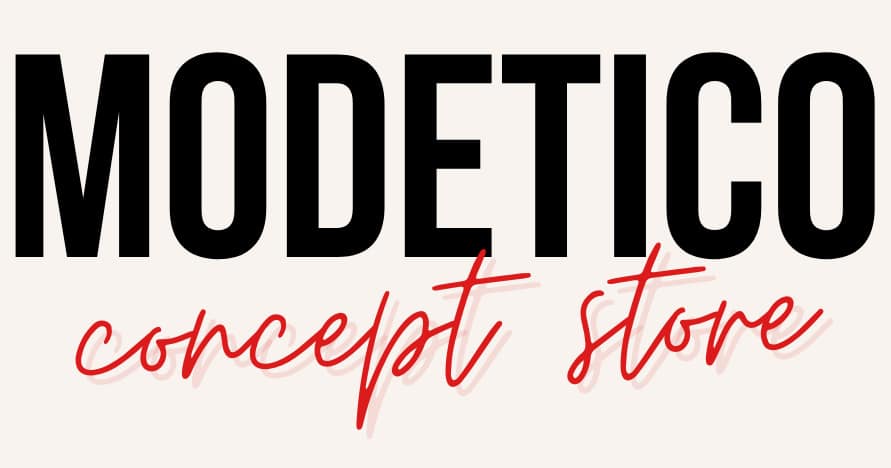
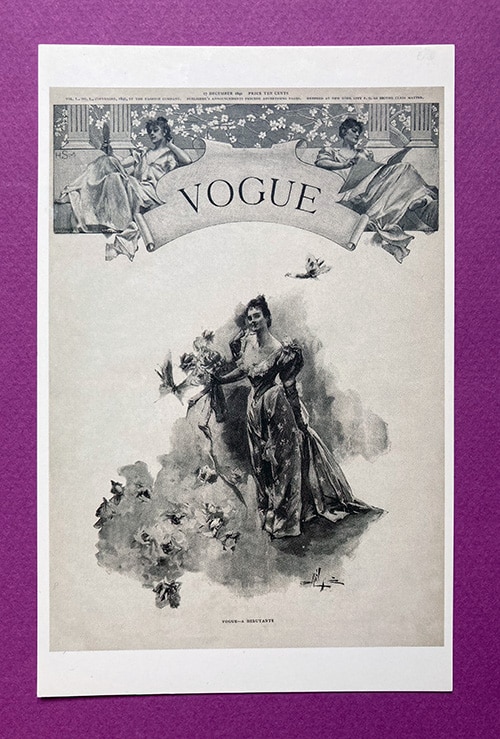
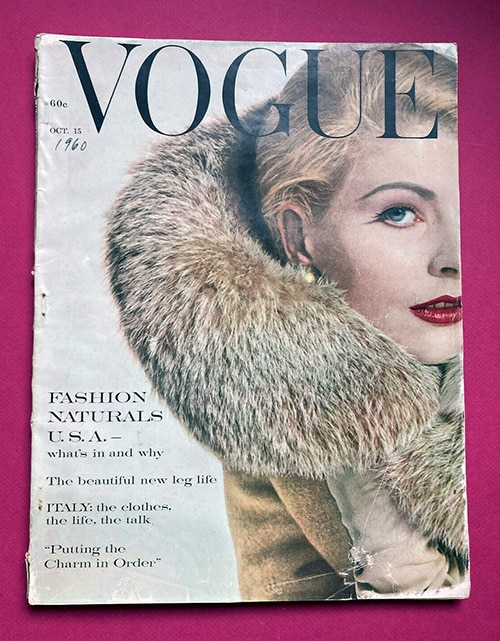
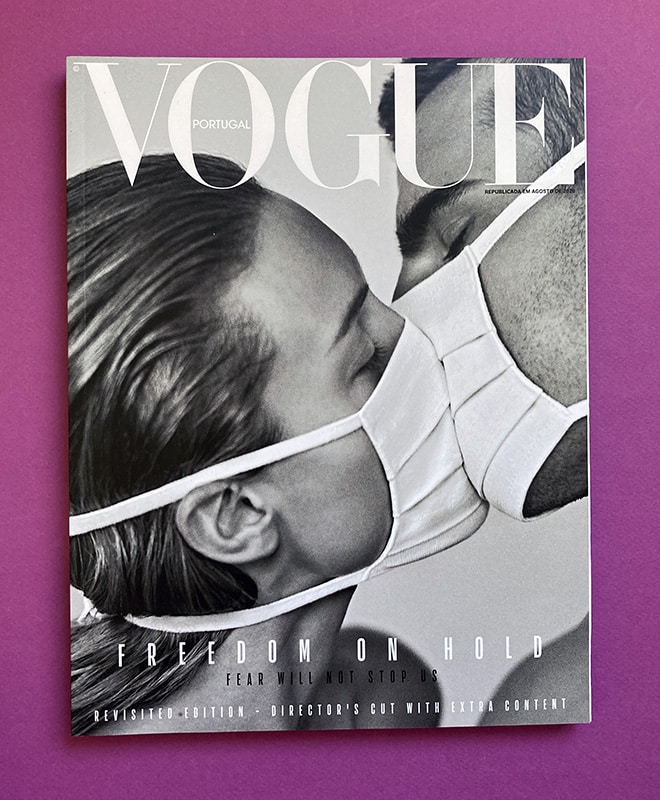
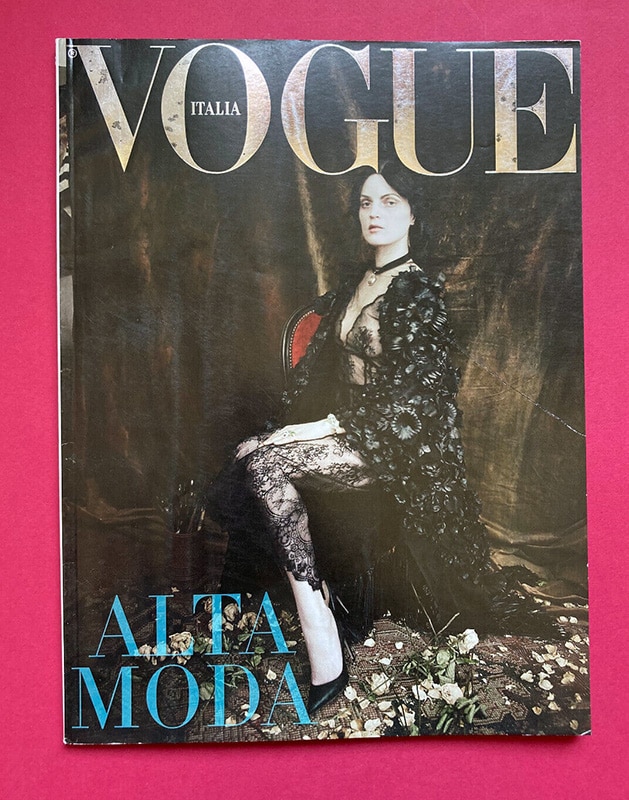
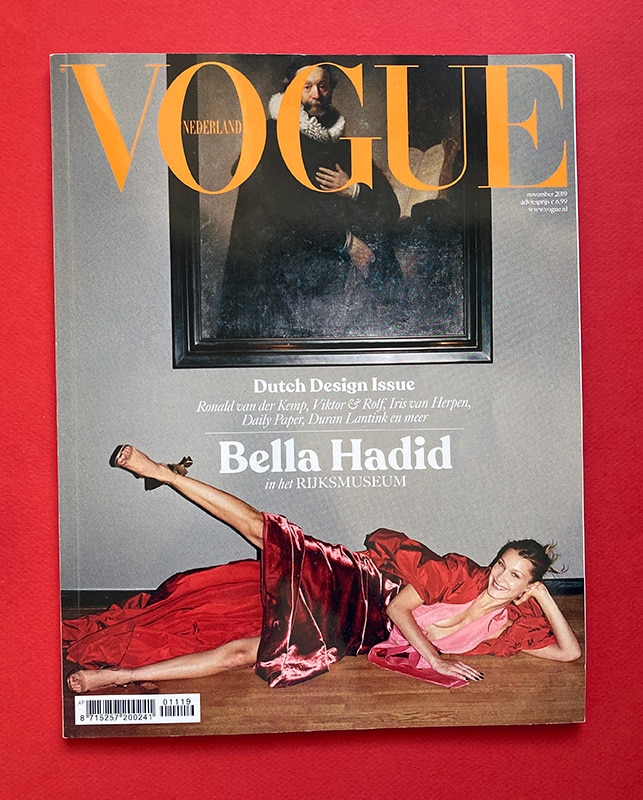
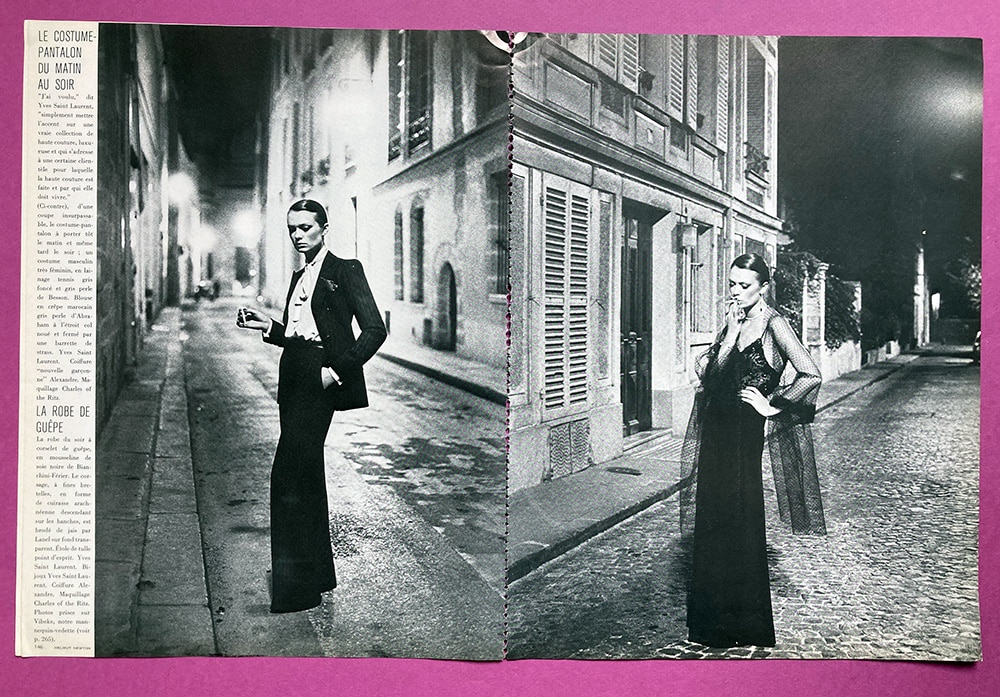
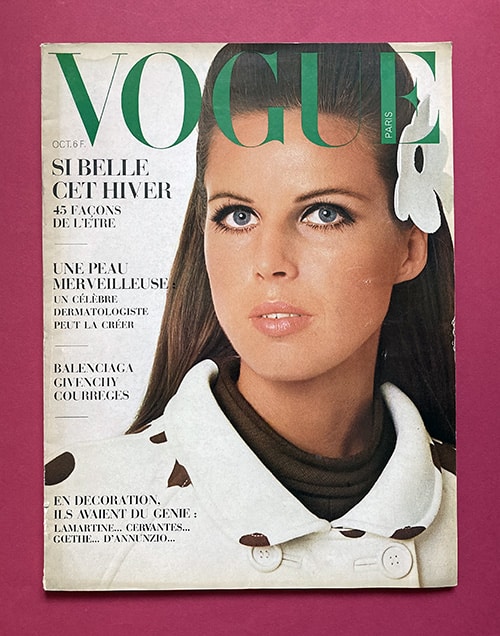
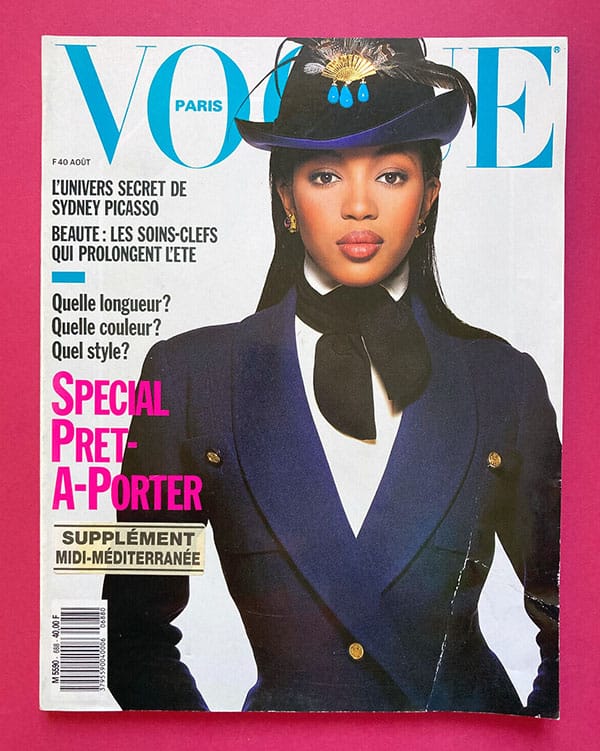
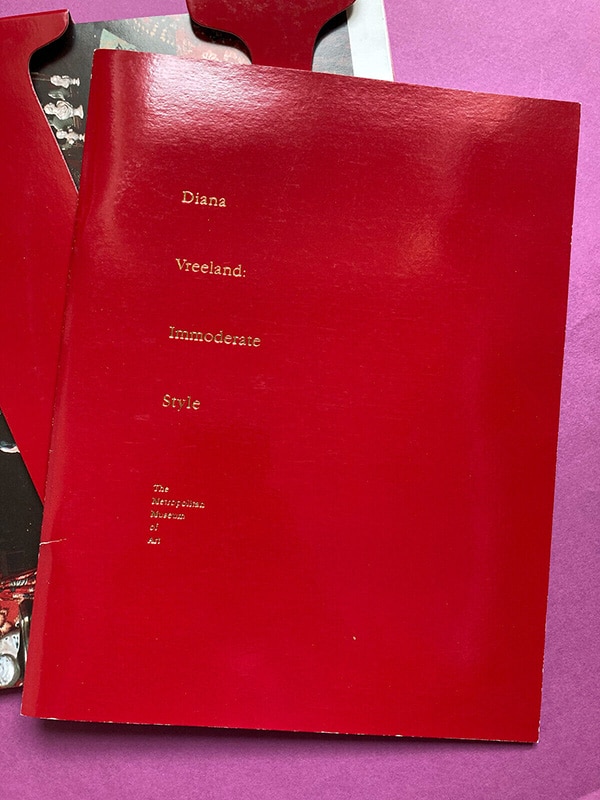
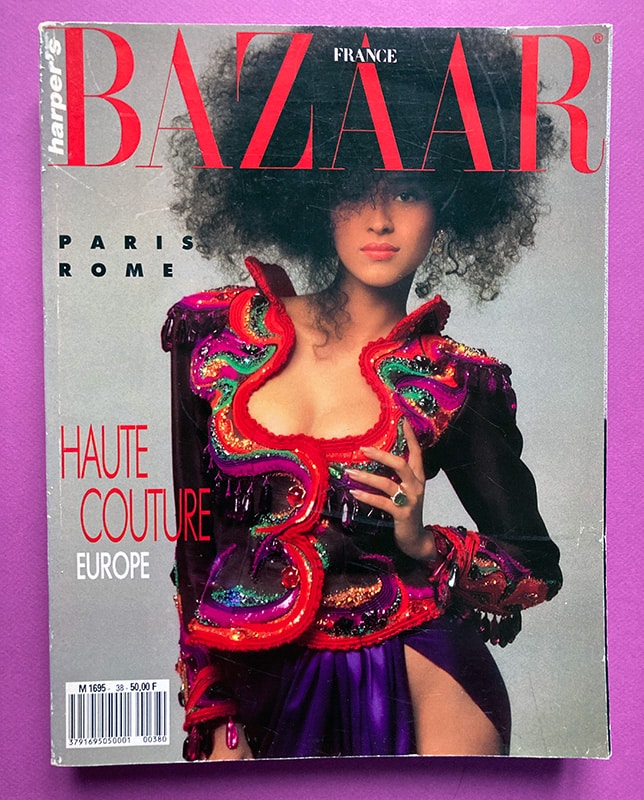
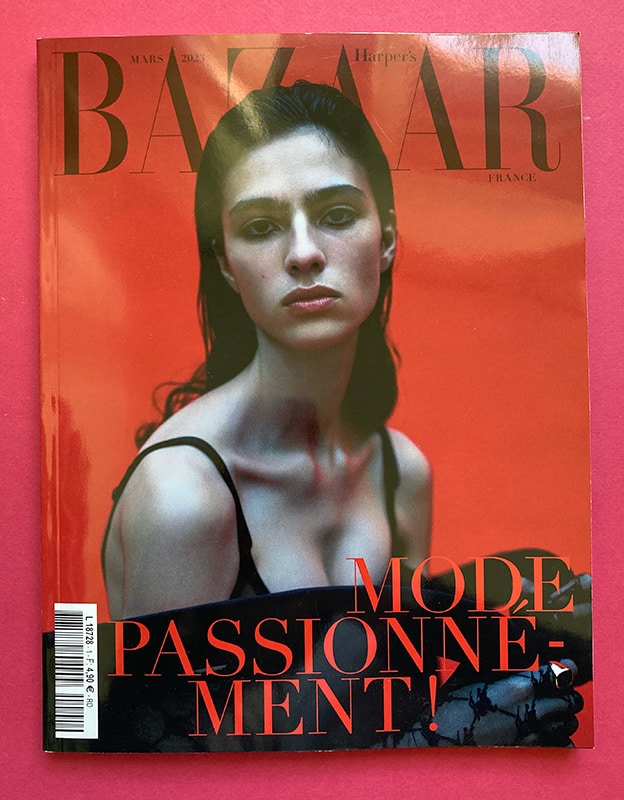
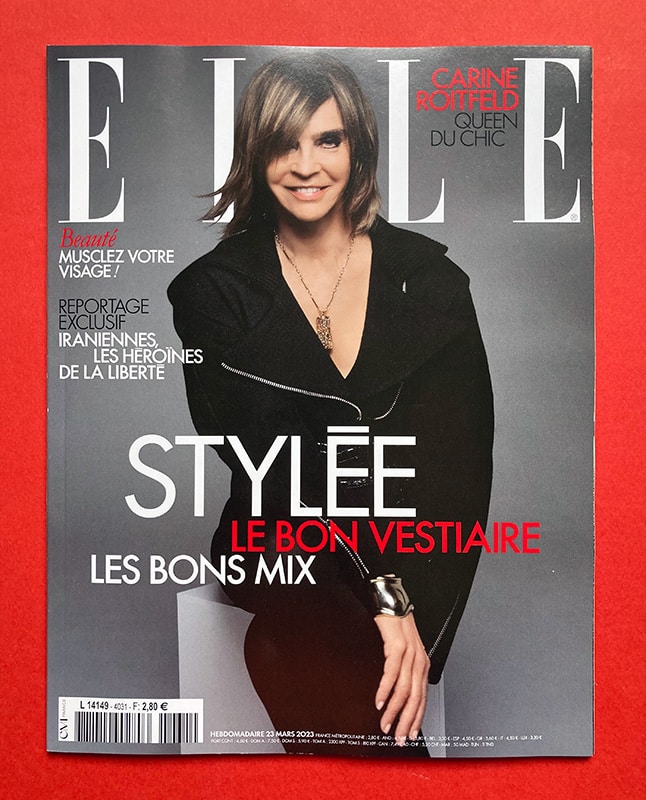

0 Comments